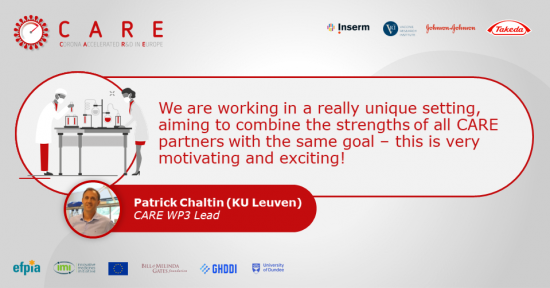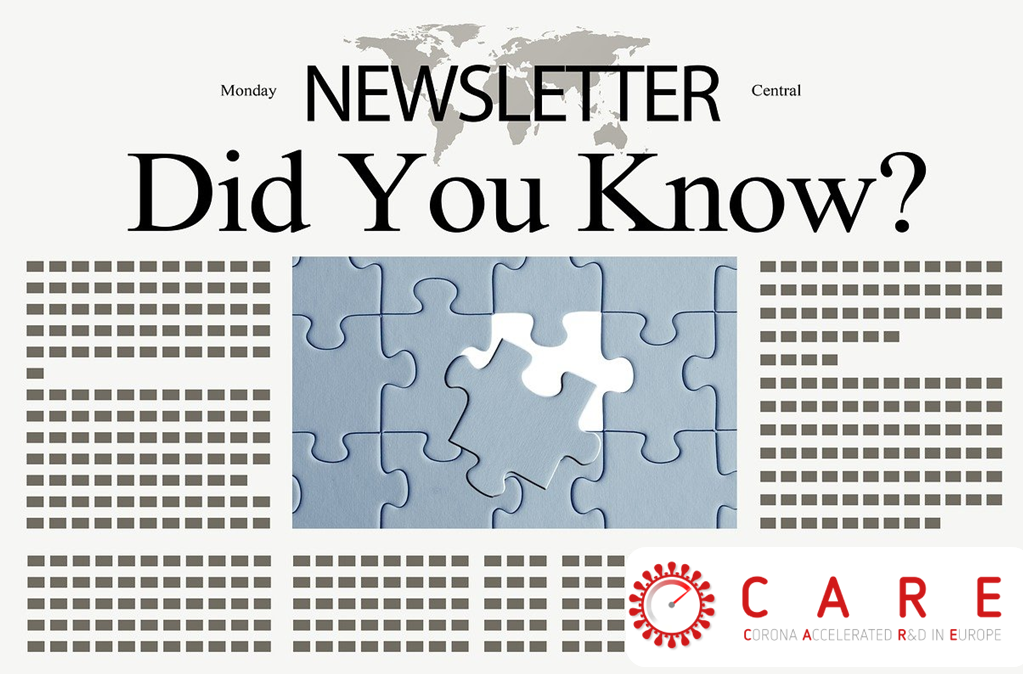WP3 – Hits to leads
The CARE work-package 3 (WP3) aims to identify and optimize small molecule antiviral drug candidates that are suitable for preclinical and clinical evaluation. The WP also assesses the impact of small molecule research and development decisions on the downstream health system and has a strong focus on pandemic preparedness as well as outbreak response. Patrick Chaltin (Centre for Drug Design and Discovery (CD3), KU Leuven), the lead of WP3 provides more insights into the work-package activities and the challenges he and his team had to overcome.
What makes the work for CARE special for you and your WP team?
Being part of the CARE consortium, which brings together top academic research groups, biotech and pharma companies with expertise in virology and/or drug discovery and development, allows our teams to make a significant contribution to the battle against the current global pandemic. We are working together in a really unique setting, aiming to combine the strengths of all CARE partners with the same goal – this is very motivating and exciting!
What are or were the biggest challenges within your WP? And how did you overcome them?
As the consortium consists of many partners and was established in a crisis situation, the identification of the various available assays, resources, and especially the ongoing hit identification required significant effort. A regular exchange between the WPs 1, 2 and 3 allowed us to get accurate status updates. It seemed that not many starting points were available at the start of the project, so we focused a part of our initial efforts on supporting the hit identification in WP1 and WP2. Streamlining and prioritizing many different approaches was a second challenge at that time. The implementation of fully empowered drug discovery teams focusing on the different targets and approaches ensured the required flexibility for the teams to move ahead in the most efficient way depending on the needs of the specific approach. This enables the implementation of dedicated streamlined screening cascades for each approach with input from other WPs. Open discussions as well as exchange of compounds and results with partners of the WPs 1 and 2 ascertain the prioritization of the most promising hit matter and a focus on the hit to lead programs with the highest potential.
What are your expectations and wishes for the future?
Our main expectation is that we will identify at least one potent (broad-spectrum) SARS-CoV antiviral candidate drug which can be further developed and helps to control the current SARS-CoV-2 pandemic and potential future variants or outbreaks of the coronavirus. Also, the CARE consortium is a great project to demonstrate that various teams with different backgrounds from academia, biotech and the pharma industry and their different interests can work together and achieve great outcomes.


